Inflatable design is having a moment and it’s far more than fun and games. From the shimmering banks of the Brisbane River to the historic lakes of The Hague and the glowing streets of London’s West End, designers are using air-filled structures to explore everything from civic engagement to urban ecology and cosmic philosophy. Once confined to children’s parties and promotional gimmicks, inflatables have evolved into a medium for serious creative experimentation precisely because of their impermanence, their playfulness, and their ability to disrupt space with a softness that demands attention.
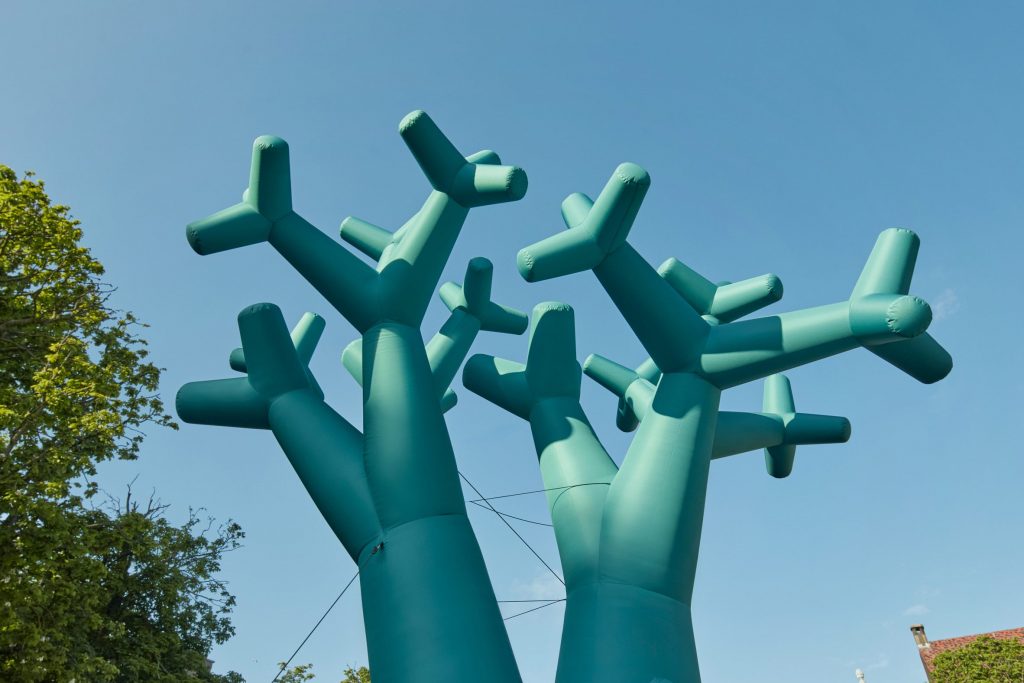
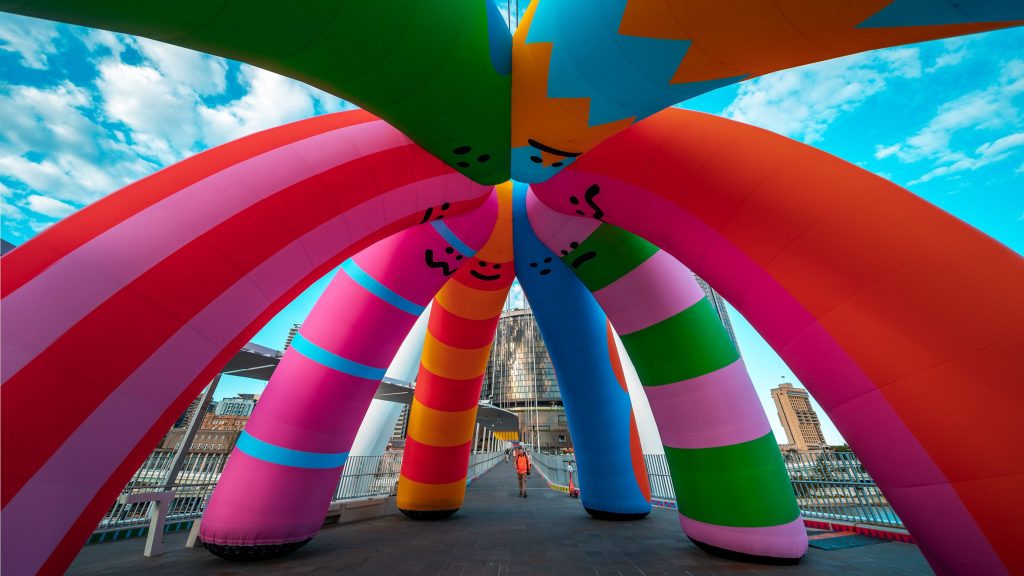
Inflatable Bridges by Craig & Karl
This September, the Brisbane Festival 2025 offered more than its usual dose of cultural festivities. It turned the city’s pedestrian bridges into immersive, inflatable artworks thanks to the bold vision of artist duo Craig & Karl. Brisbane-born Craig Redman and Karl Maier, now based in New York and London respectively, were commissioned to transform key pedestrian pathways into vibrant installations as part of Walk This Way, a public art trail celebrating movement, community, and design.
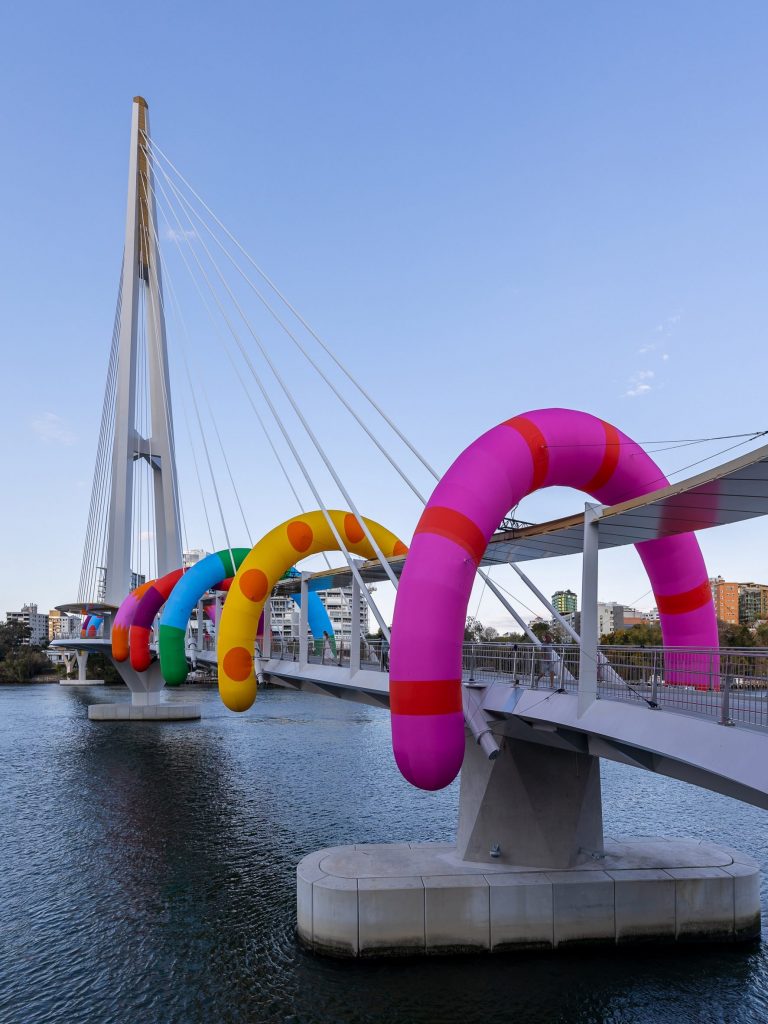
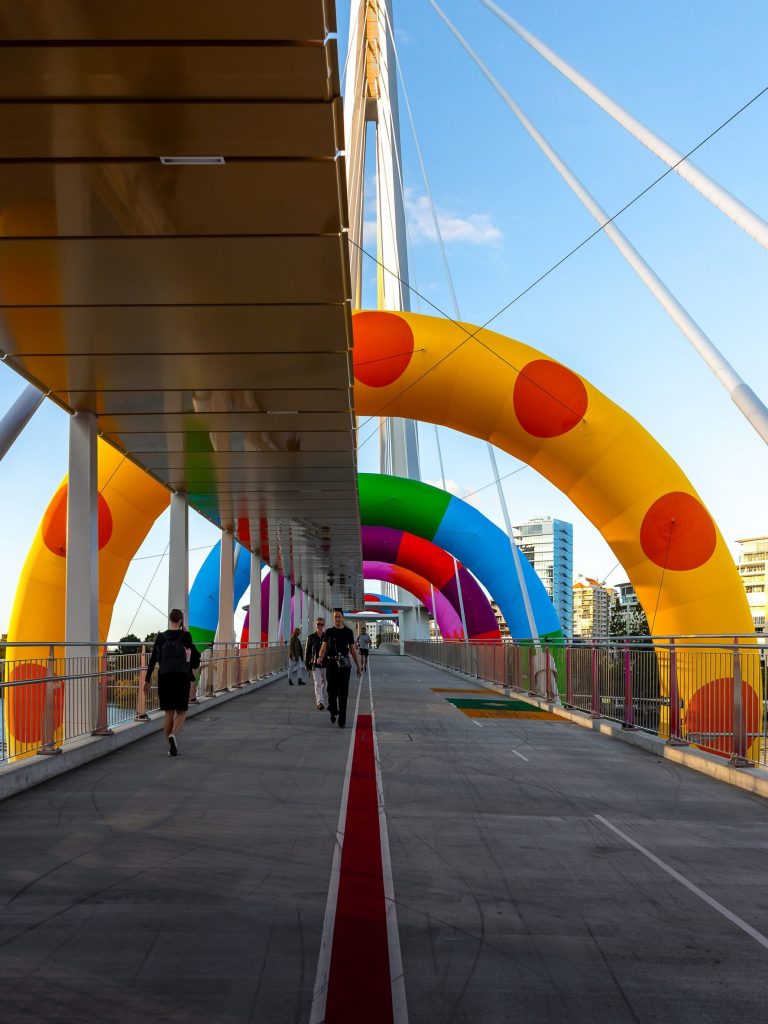
Inflatable Bridges by Craig & Karl
Their interventions embraced the structural language of each bridge, amplifying their architectural qualities rather than masking them. The newly opened Kangaroo Point Bridge, for instance, was adorned with sweeping, candy-colored inflatable arches that echoed its graceful cable-stay design. These bold, buoyant forms spanned the pedestrian and cycling route, turning a simple river crossing into an urban spectacle.
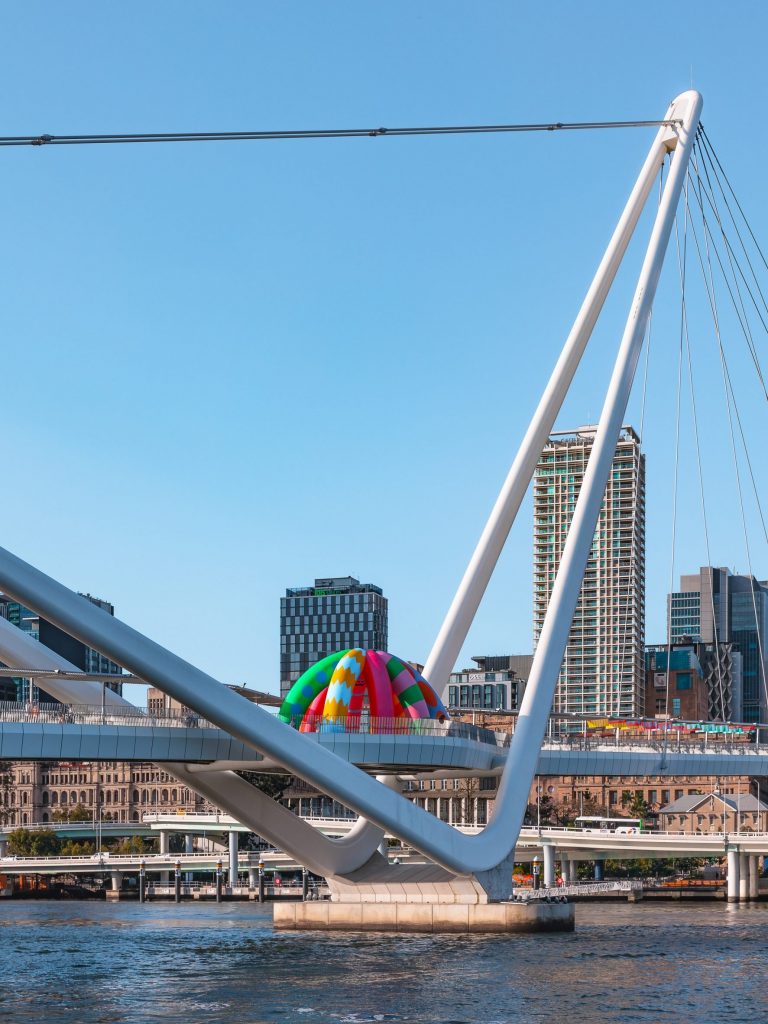
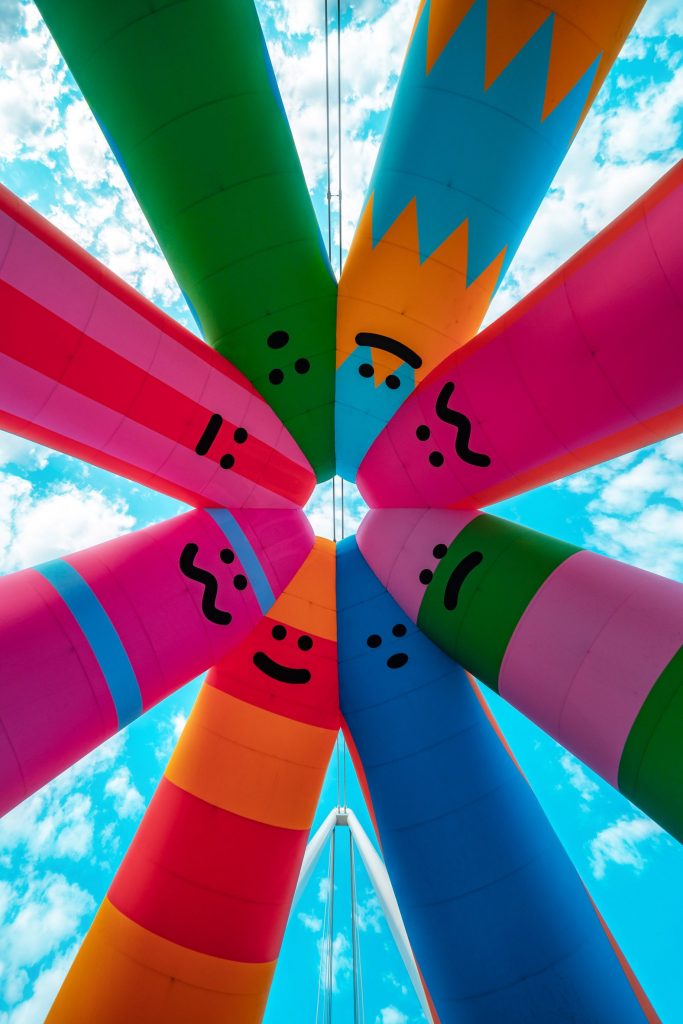
Inflatable Bridges by Craig & Karl
Elsewhere, the Neville Bonner Bridge played host to a group of inflatable characters called Mateys. Clustered in a dome-like structure, the figures leaned inward as if in conversation, creating a playful canopy under which pedestrians could walk, rest, or simply look up and smile. The Goodwill Bridge, known for its undulating shape, was complemented by a series of horizontal banners printed with Craig & Karl’s signature geometric patterns, billowing softly in the breeze. Together, these installations invited people to experience the city differently. Whether through organized walking tours or spontaneous detours, the project encouraged deeper engagement with Brisbane’s riverside spaces.
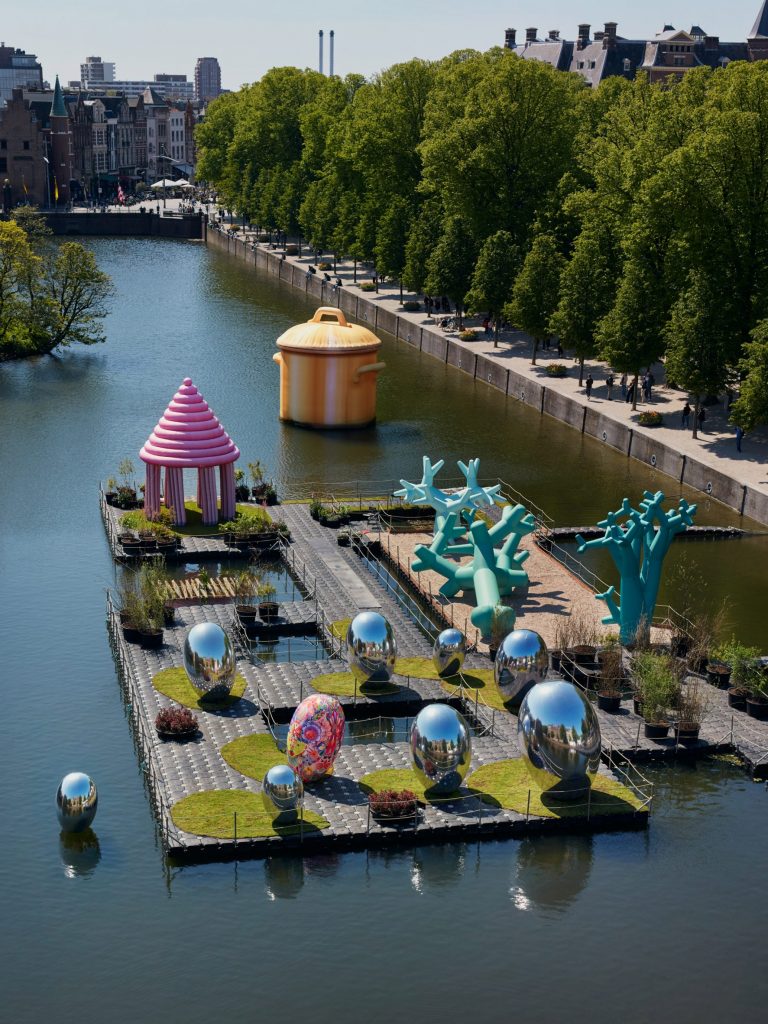
Inflatable installations at BlowUp Art The Hague 2024 (also header image)
From the sweeping riverbanks of Brisbane, we drift north to the Hofvijver lake in the heart of The Hague, where last year’s BlowUp Art The Hague festival transformed a historic civic landscape into a surreal floating sculpture garden. Curated by Mary Hessing of WOTH Studio, the third edition of the event invited four Dutch design studios – Marcel Wanders, Job Smeets (Studio Job), Mieke Meijer, and Sigrid Calon – to create site-specific inflatable installations that explored the intersection of nature, culture, and urban life.
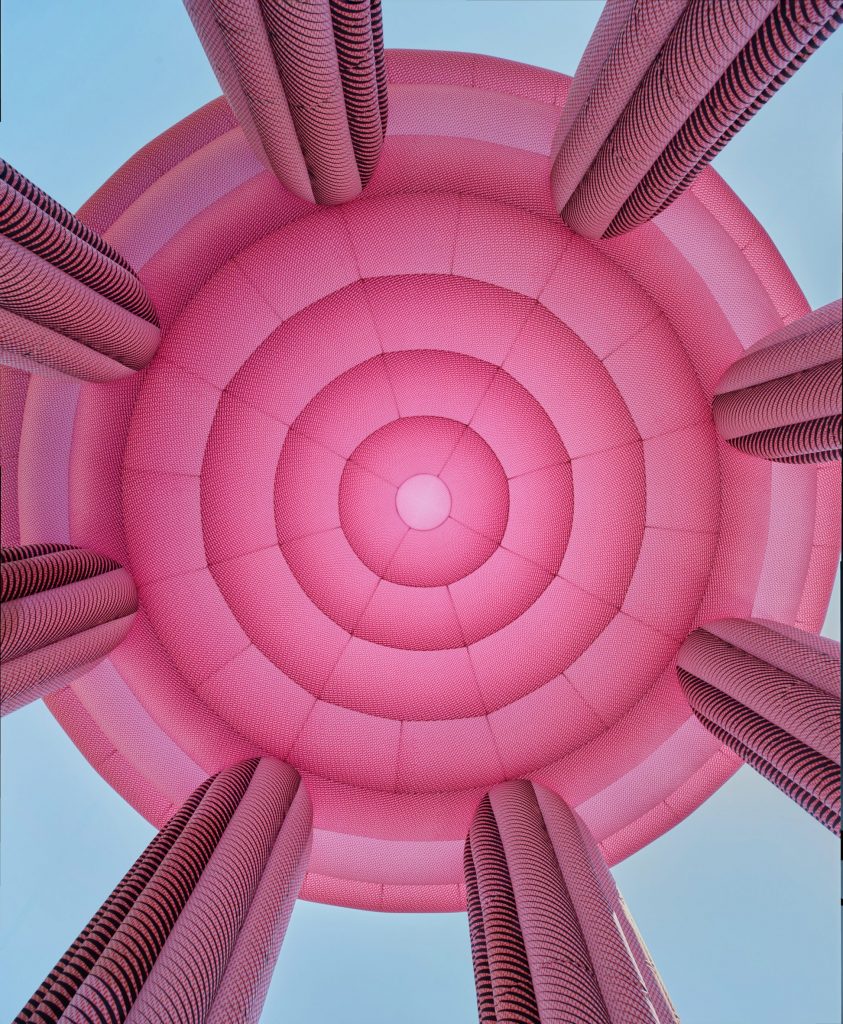
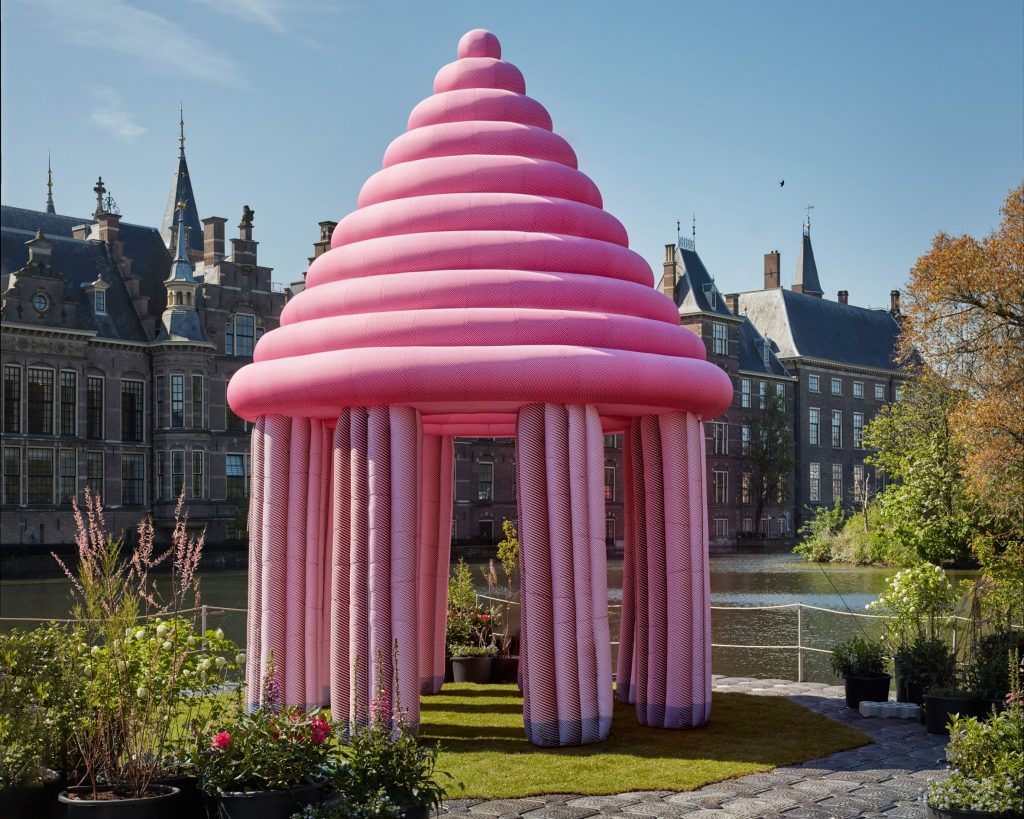
Inflatable installations at BlowUp Art The Hague 2024
Installed on a pontoon island floating gently in the Hofvijver, just steps from the Dutch parliament and the Mauritshuis museum, the inflatable artworks offered both whimsy and weight. The showcase was more than a playful visual experience; it also served a deeper purpose. Developed in collaboration with students from Yuverta college’s Urban Green Development program, the installation reimagined how green space might be integrated into dense city centers, this time with air and imagination as the building materials.
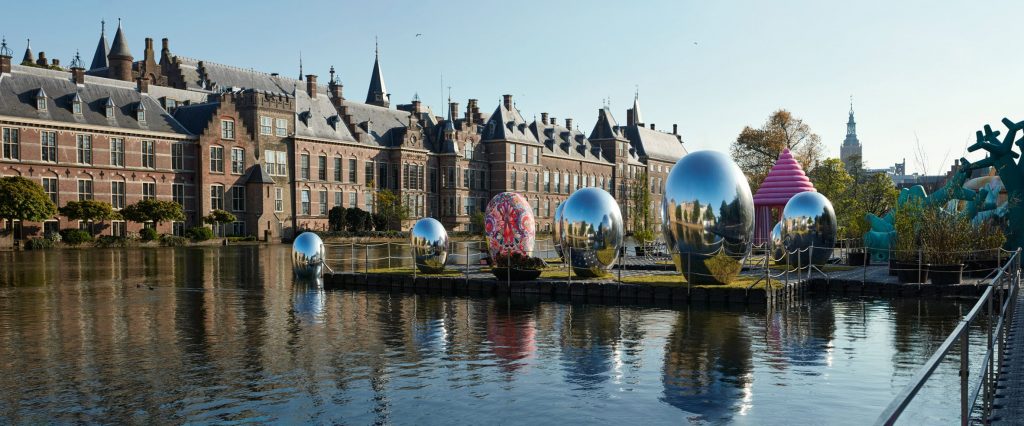
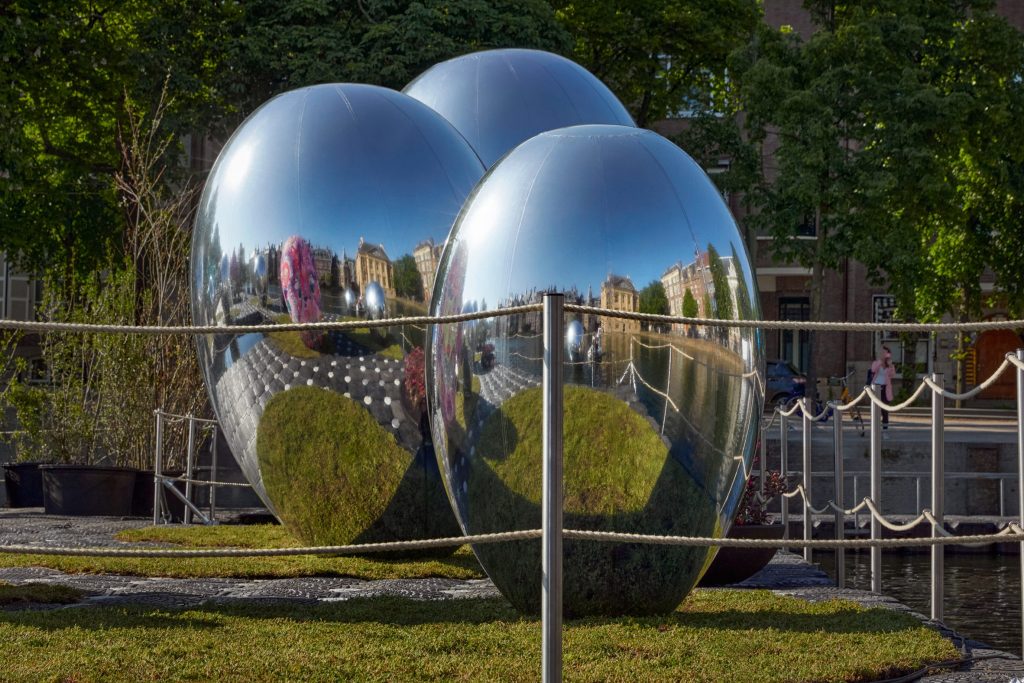
Inflatable installations at BlowUp Art The Hague 2024
Among the highlights was Airboretum by Studio Mieke Meijer, an inflatable grove of stylized trees whose trunks split into abstract branches. Standing upright or lying as if freshly felled, the trees became metaphors in motion gesturing toward ideas of growth, fragility, and regeneration. Nearby, Marcel Wanders contributed a series of mirrored, egg-like inflatables that swayed gently in the breeze. Grounded by weighted bases and shimmering in the sunlight, the eggs invited gentle interaction, encouraging visitors to give them a playful nudge and watch as they rocked, wobbling but never falling.
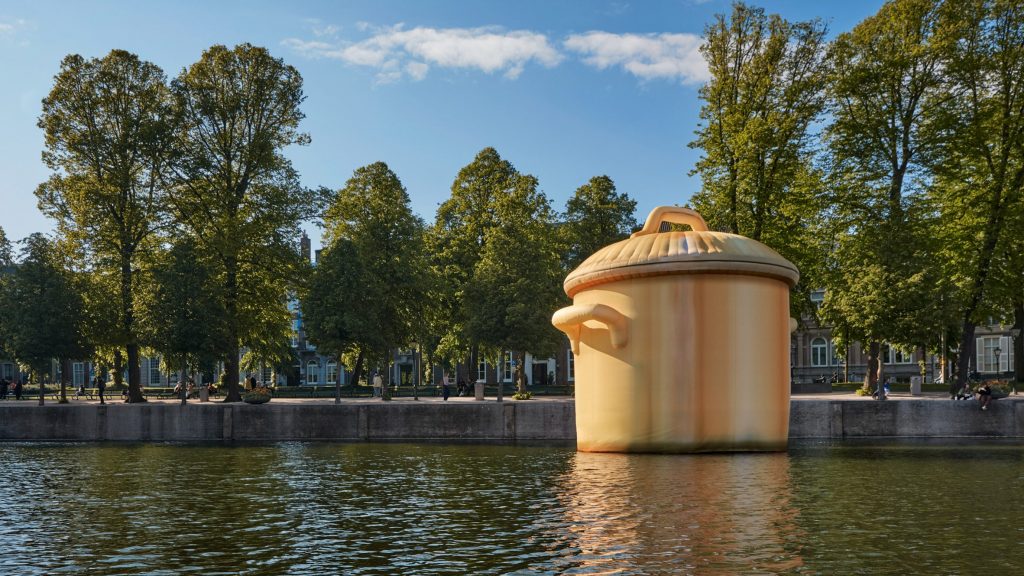
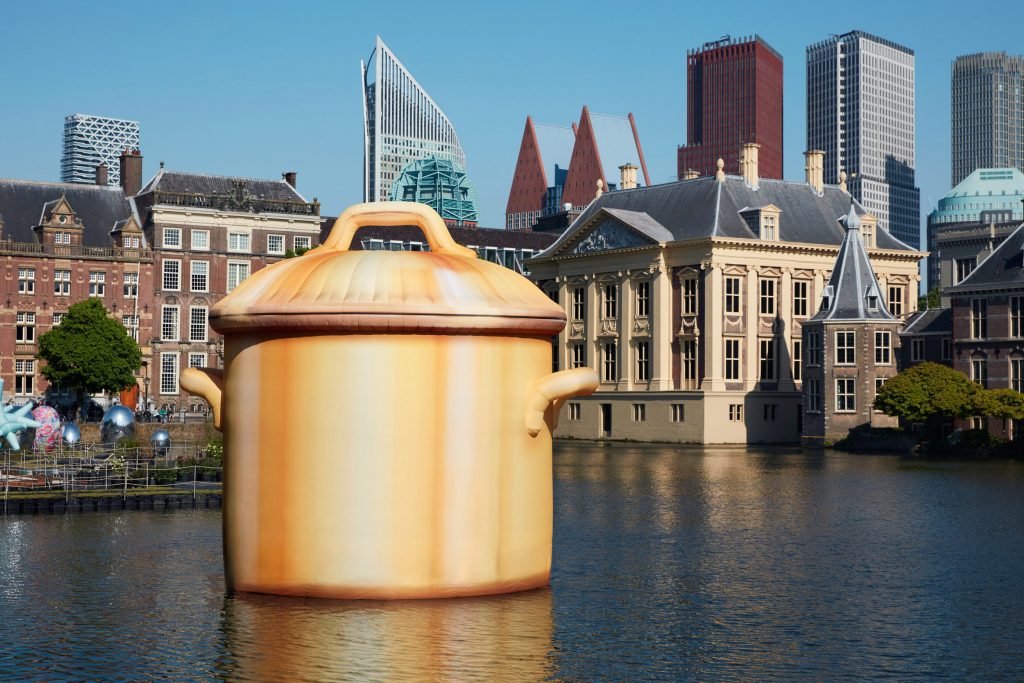
Inflatable installations at BlowUp Art The Hague 2024
At the far edge of the pontoon stood Sigrid Calon’s pastel-pink Gazebo, a graphic reinterpretation of an octagonal tower from the nearby Binnenhof complex. With its concentric turret and fluted pillars wrapped in intricate patterns, the piece bridged historical reference with contemporary form. Floating just beyond the pontoon was Like a Pan in Water, a golden cooking pot by Studio Job. Mysterious and monumental, it evoked the image of a lost artifact drifting out of a dream or an 18th-century Dutch kitchen. With each piece reframing everyday symbols through an inflatable lens, BlowUp Art The Hague offered a thoughtful, if eccentric, meditation on public space and the role of design within it.
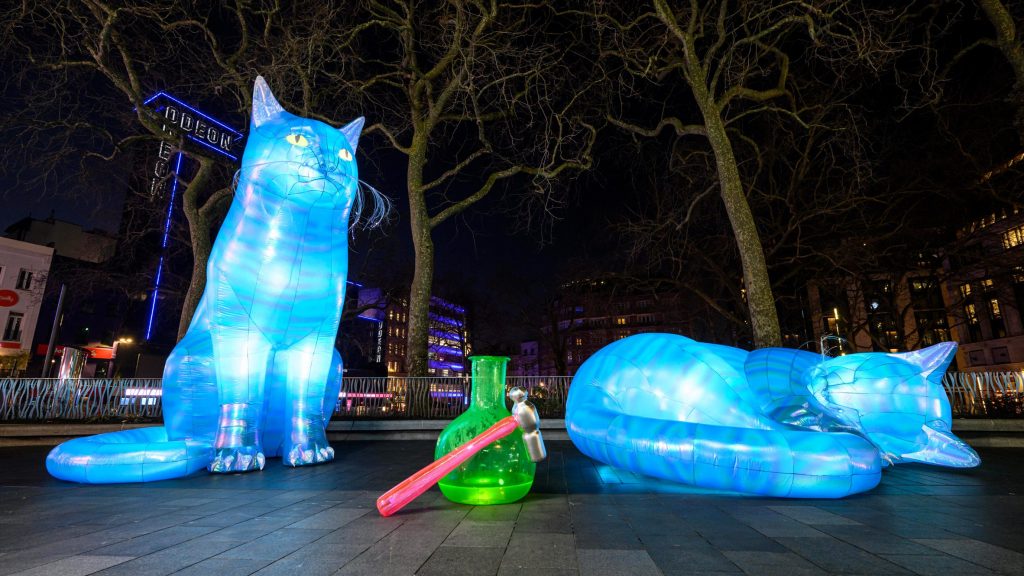
Piccadilly Un:Plugged by Nelly Ben Hayoun-Stépanian
While The Hague invited reflection through serene floating forms, London took an entirely different route – straight into the stratosphere. In March 2025, designer and provocateur Nelly Ben Hayoun-Stépanian transformed parts of the city’s West End into a glowing, inflatable universe with Piccadilly Un:Plugged. The ephemeral installation stretched across iconic sites including Piccadilly Circus, Leicester Square, and St James’s Market as part of London’s Art After Dark programme, turning some of the capital’s most trafficked nightlife zones into a multisensory celebration of radical imagination.
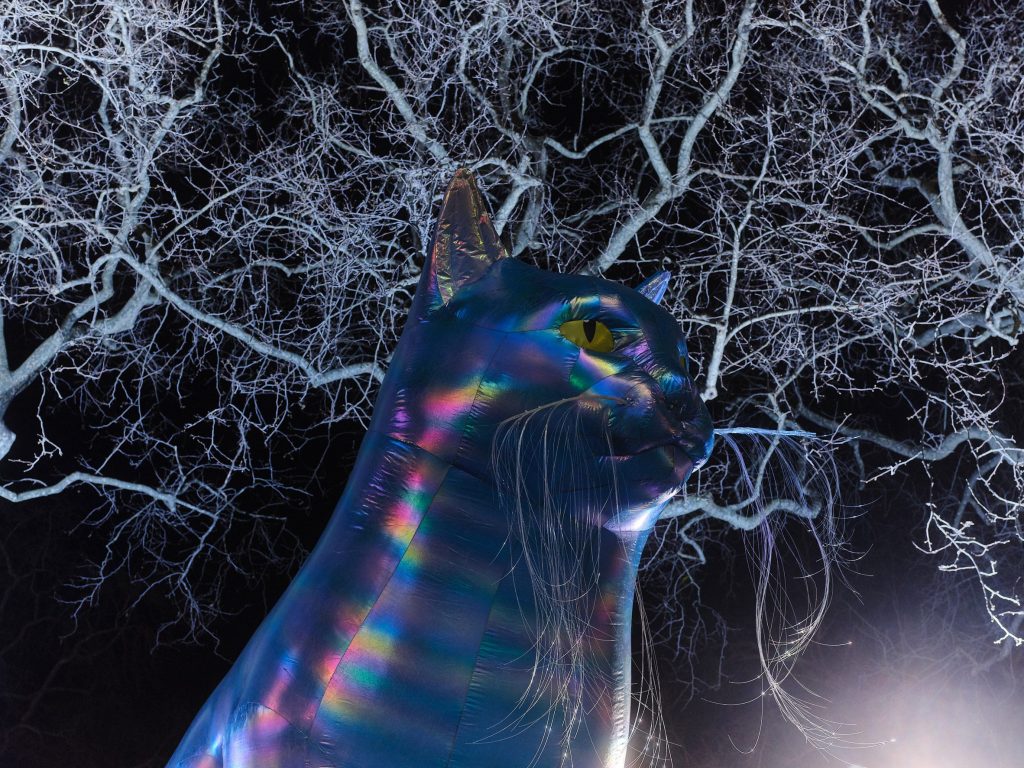
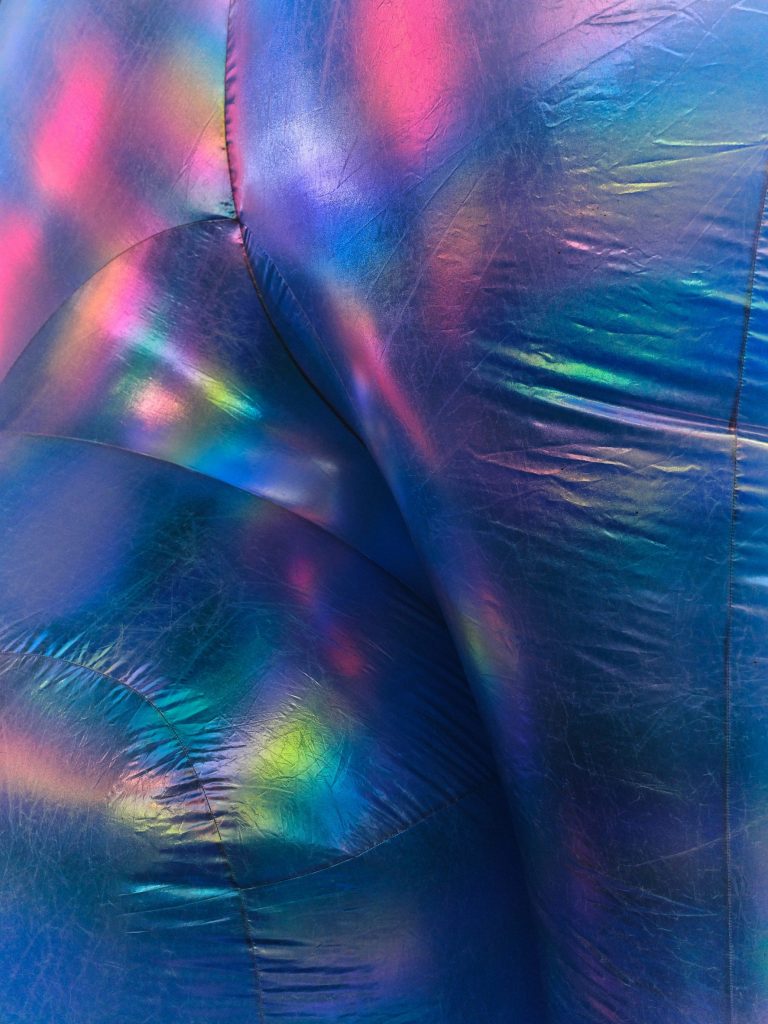
Piccadilly Un:Plugged by Nelly Ben Hayoun-Stépanian
At the heart of Piccadilly Un:Plugged were a cast of otherworldly inflatable sculptures: asteroid-like boulders, shapeshifting chrome forms, and surreal, space-age cats inspired by Schrödinger’s famous quantum thought experiment. These cosmic felines served as a metaphor for paradox and possibility. For Ben Hayoun-Stépanian, the installation was not just art, but a call to re-engage with nightlife culture as a vital space for youth expression and countercultural creativity.
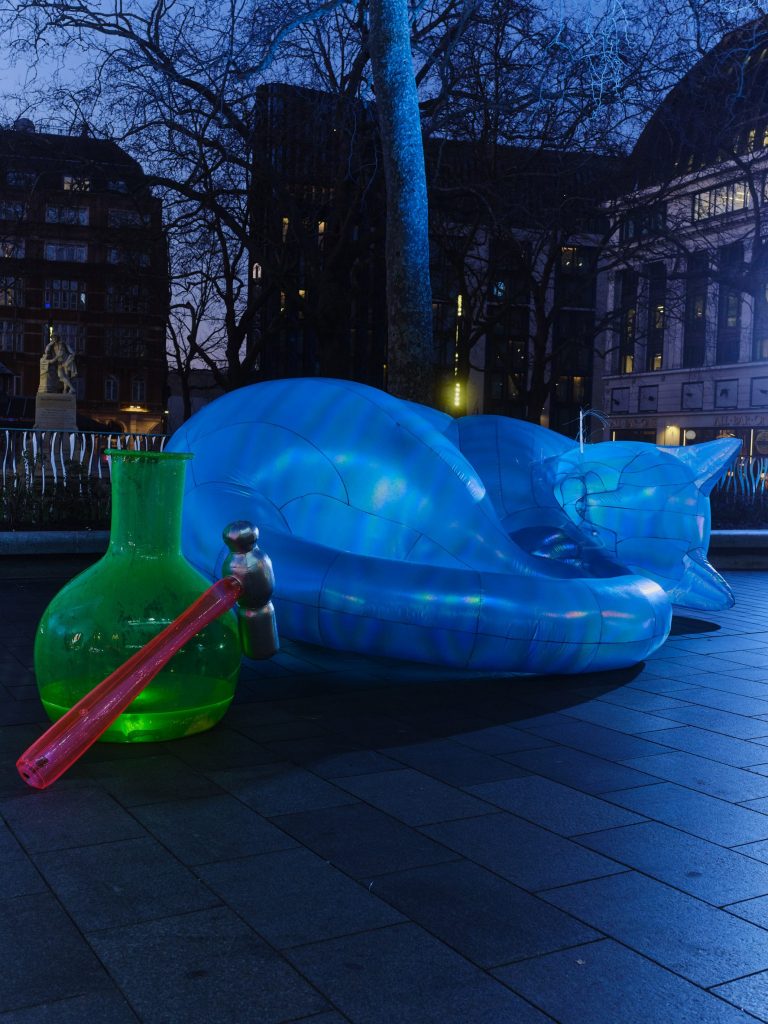
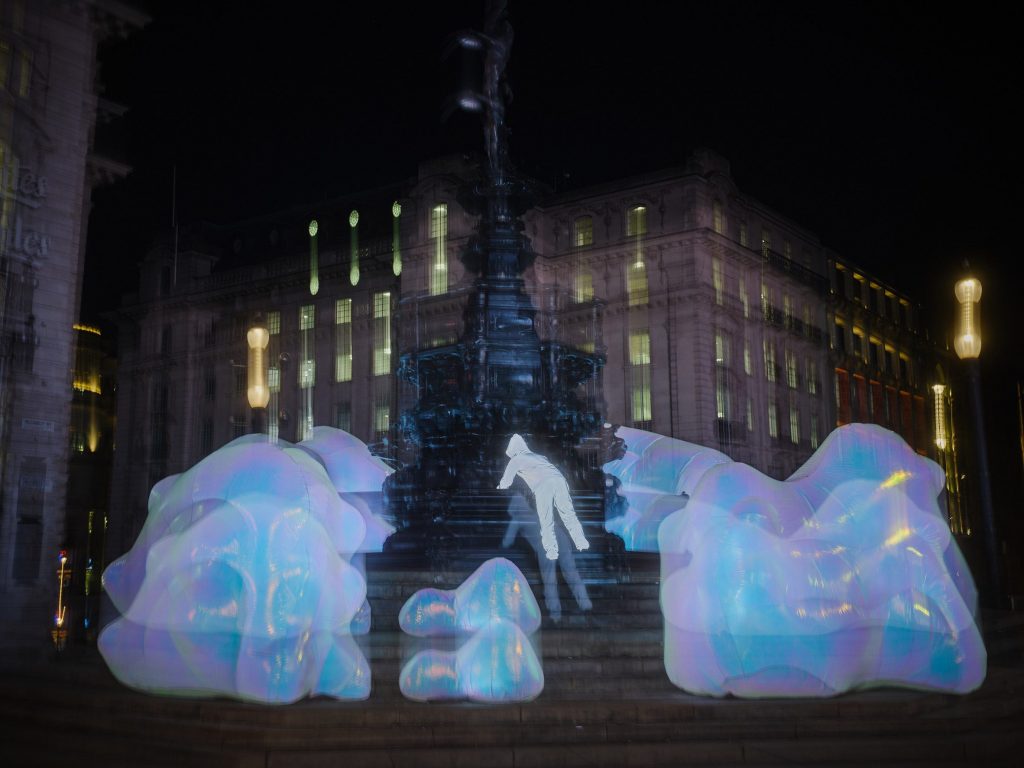
Piccadilly Un:Plugged by Nelly Ben Hayoun-Stépanian
Visually, the installation pulsed with iridescent hues, UV-reactive finishes, and textures influenced by the designer’s background in textiles and fascination with nail art. A “lunar sound experiment” saw audio signals, including compositions by musician Ayse Hassan, bounced off the moon’s surface and returned to Earth layered in cosmic static. The result was an audio collage that was both disorienting and strangely euphoric. As Ben Hayoun-Stépanian described it, “DJing with the moon” offered a fresh mode of listening, less about comfort and more about cosmic connection.